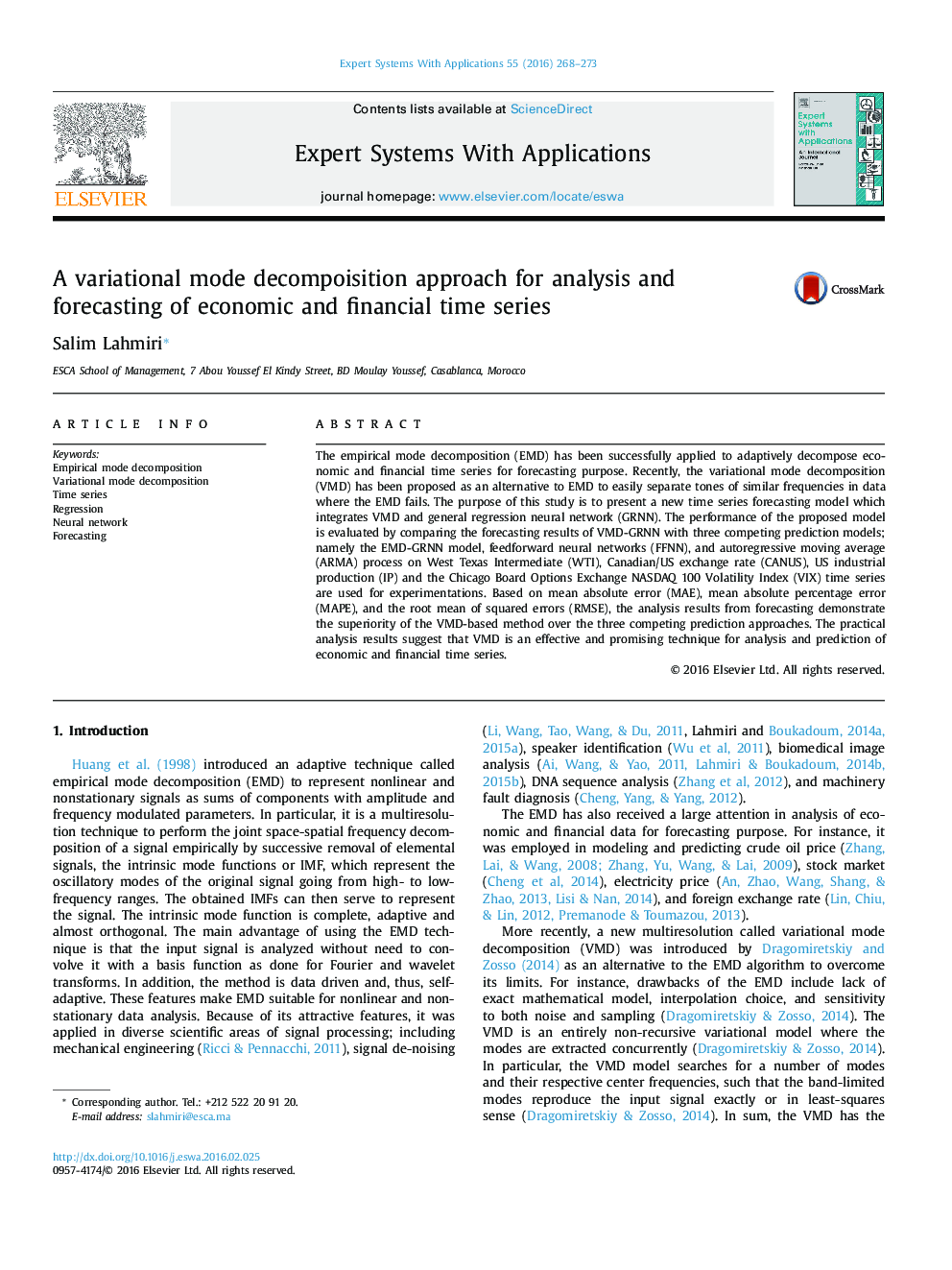| کد مقاله | کد نشریه | سال انتشار | مقاله انگلیسی | نسخه تمام متن |
|---|---|---|---|---|
| 383166 | 660807 | 2016 | 6 صفحه PDF | دانلود رایگان |
The empirical mode decomposition (EMD) has been successfully applied to adaptively decompose economic and financial time series for forecasting purpose. Recently, the variational mode decomposition (VMD) has been proposed as an alternative to EMD to easily separate tones of similar frequencies in data where the EMD fails. The purpose of this study is to present a new time series forecasting model which integrates VMD and general regression neural network (GRNN). The performance of the proposed model is evaluated by comparing the forecasting results of VMD-GRNN with three competing prediction models; namely the EMD-GRNN model, feedforward neural networks (FFNN), and autoregressive moving average (ARMA) process on West Texas Intermediate (WTI), Canadian/US exchange rate (CANUS), US industrial production (IP) and the Chicago Board Options Exchange NASDAQ 100 Volatility Index (VIX) time series are used for experimentations. Based on mean absolute error (MAE), mean absolute percentage error (MAPE), and the root mean of squared errors (RMSE), the analysis results from forecasting demonstrate the superiority of the VMD-based method over the three competing prediction approaches. The practical analysis results suggest that VMD is an effective and promising technique for analysis and prediction of economic and financial time series.
Journal: Expert Systems with Applications - Volume 55, 15 August 2016, Pages 268–273
